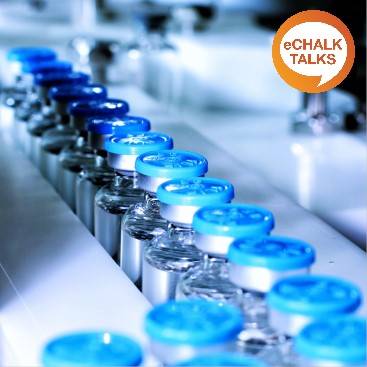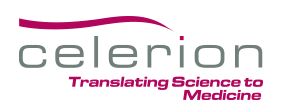Catalog
Gene therapy has already demonstrated its potential of bringing life‐changing therapies to patients with devastating diseases and a growing number of clinical trials have been approved in recent years. One of the requirements in clinical development is to monitor vector shedding to control the potential environmental risk associated with the therapy. The assay read‐out is qualitative, providing the sponsor and investigator with the relevant information about vector‐shedding clearance after therapy. A sensitive and reliable method is needed in several different matrices, typically including blood, plasma, faeces, semen, urine and saliva. Viral shedding assays involve the extraction of viral DNA from patient secretions and excreta, the presence of which is then measured by selective and sensitive molecular methods (qPCR or ddPCR).
Here we present the development of a shedding method for the detection of a AAV8 vector in several matrices, including whole blood, plasma, faeces, semen, urine and saliva. The method development is split into 3 distinct phases: primer/probe design, PCR optimization and extraction. In first part of method development, we designed 5 sets or primers/probes. In the second phase we optimised the best qPCR conditions by comparing the five primers/probe sets and four master mixes to identify the combination, showing the best amplification efficiency and linearity and the lowest limit of quantification (LLOQ), limit of detection (LOD), and background noise. In the third phase, we compared seven commercially available DNA extraction kits and evaluated them based on the viral DNA recovery efficiency and, most importantly, the sensitivity, measured in genome copies per μl (or mg) of starting material. While we chose a single combination of primer/probe set and master mix, we observed that different DNA extraction kits have to be used depending on the matrix of interest in order to achieve the best sensitivity which ranged from 0.6 to 7.4 GC/μl (mg) obtained from 50‐200 μl (mg) of starting material.
In this presentation, we share the unique requirements and challenges in developing vector shedding assays, based on the results of a streamlined AAV8 shedding assay method development. We are sharing an extensive comparison of most commercially available extraction kits. We conclude with our recommendation for validation parameters, acceptance criteria and results reporting to support clinical and preclinical gene therapy studies.
Learning objectives:
Understand the critical role of vector shedding assays in assessing the environmental safety of gene therapies, highlighting the importance of monitoring AAV8 vector shedding in clinical and preclinical settings.
Gain insights into the methodological advancements in primer/probe design, PCR optimization, and DNA extraction techniques that enhance the sensitivity and reliability of detecting viral DNA across various biological matrices.
Learn to evaluate and select the most effective DNA extraction kits based on matrix‐specific performance, contributing to the development of standardized protocols for vector shedding assays in gene therapy research.
About this item
Gene therapy has already demonstrated its potential of bringing life‐changing therapies to patients with devastating diseases and a growing number of clinical trials have been approved in recent years. One of the requirements in clinical development is to monitor vector shedding to control the potential environmental risk associated with the therapy. The assay read‐out is qualitative, providing the sponsor and investigator with the relevant information about vector‐shedding clearance after therapy. A sensitive and reliable method is needed in several different matrices, typically including blood, plasma, faeces, semen, urine and saliva. Viral shedding assays involve the extraction of viral DNA from patient secretions and excreta, the presence of which is then measured by selective and sensitive molecular methods (qPCR or ddPCR).
Here we present the development of a shedding method for the detection of a AAV8 vector in several matrices, including whole blood, plasma, faeces, semen, urine and saliva. The method development is split into 3 distinct phases: primer/probe design, PCR optimization and extraction. In first part of method development, we designed 5 sets or primers/probes. In the second phase we optimised the best qPCR conditions by comparing the five primers/probe sets and four master mixes to identify the combination, showing the best amplification efficiency and linearity and the lowest limit of quantification (LLOQ), limit of detection (LOD), and background noise. In the third phase, we compared seven commercially available DNA extraction kits and evaluated them based on the viral DNA recovery efficiency and, most importantly, the sensitivity, measured in genome copies per μl (or mg) of starting material. While we chose a single combination of primer/probe set and master mix, we observed that different DNA extraction kits have to be used depending on the matrix of interest in order to achieve the best sensitivity which ranged from 0.6 to 7.4 GC/μl (mg) obtained from 50‐200 μl (mg) of starting material.
In this presentation, we share the unique requirements and challenges in developing vector shedding assays, based on the results of a streamlined AAV8 shedding assay method development. We are sharing an extensive comparison of most commercially available extraction kits. We conclude with our recommendation for validation parameters, acceptance criteria and results reporting to support clinical and preclinical gene therapy studies.
Learning objectives:
- Understand the critical role of vector shedding assays in assessing the environmental safety of gene therapies, highlighting the importance of monitoring AAV8 vector shedding in clinical and preclinical settings.
- Gain insights into the methodological advancements in primer/probe design, PCR optimization, and DNA extraction techniques that enhance the sensitivity and reliability of detecting viral DNA across various biological matrices.
- Learn to evaluate and select the most effective DNA extraction kits based on matrix‐specific performance, contributing to the development of standardized protocols for vector shedding assays in gene therapy research.
Speaker Information
Johannes Stanta, Ph.D.
Johannes Stanta, Ph.D., works at Celerion as the Global Director of Molecular & Cellular Biology (MCB) being in charge of the Lincoln, NE and Zürich, Switzerland MCB laboratories at Celerion, INC. In this role, Johannes strengthens Celerion’s service offering with GLP and GCP compliant molecular and cell biology testing to support the development of new modality therapies, such as cell and gene therapies. He previously worked at Freeline Therapeutics as Director of Bioanalysis where he has the overall bioanalytical responsibility of several gene therapy clinical trials, including the companion diagnostic analytical and clinical development. He previously worked in senior scientific leadership roles in bioanalysis and clinical laboratory at LabCorp and Hammersmith Medicines Research. He received his PhD from the University of Cambridge, focusing on the discovery of diagnostic biomarkers for neuropsychiatric disorders. He has hands-on industry experience in small and large molecule bioanalytical assay development, validation and sample analysis, supporting clinical and non-clinical programs and is also leading the European Bioanalysis Forum’s Cell and Gene Therapy interest group where Bioanalytical labs across Europe share their bioanalytical challenges and best practices

